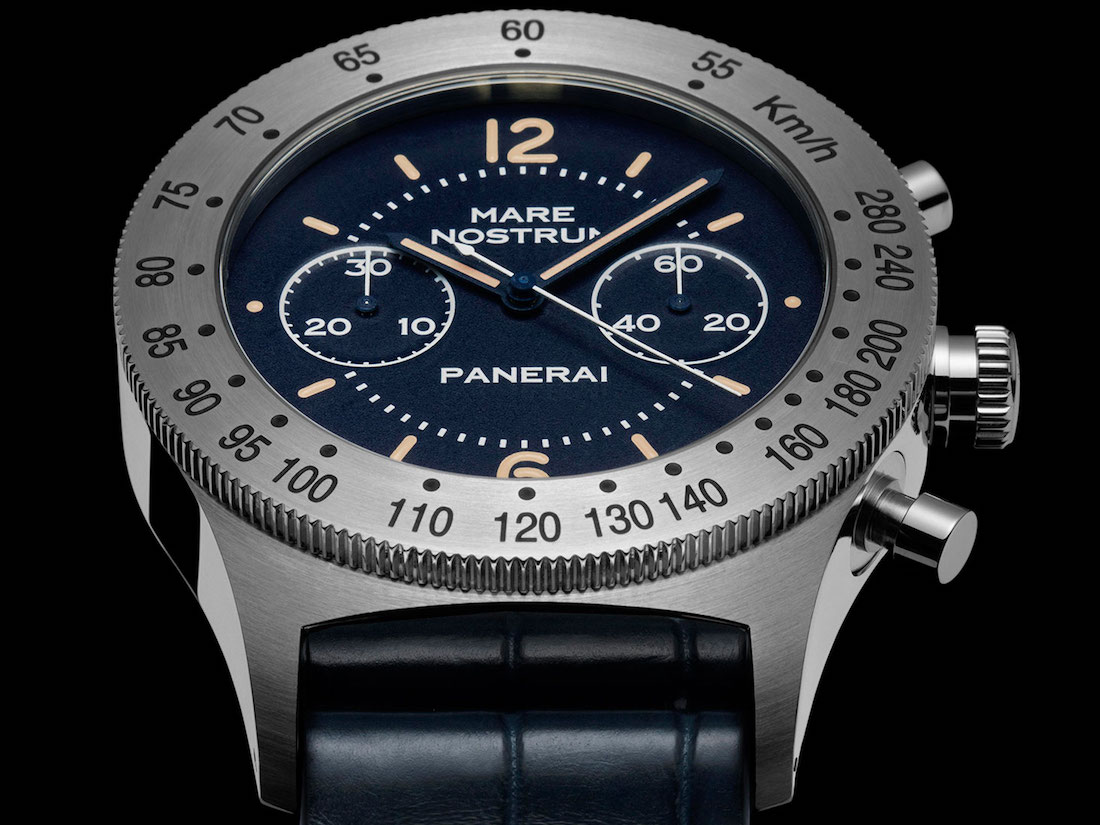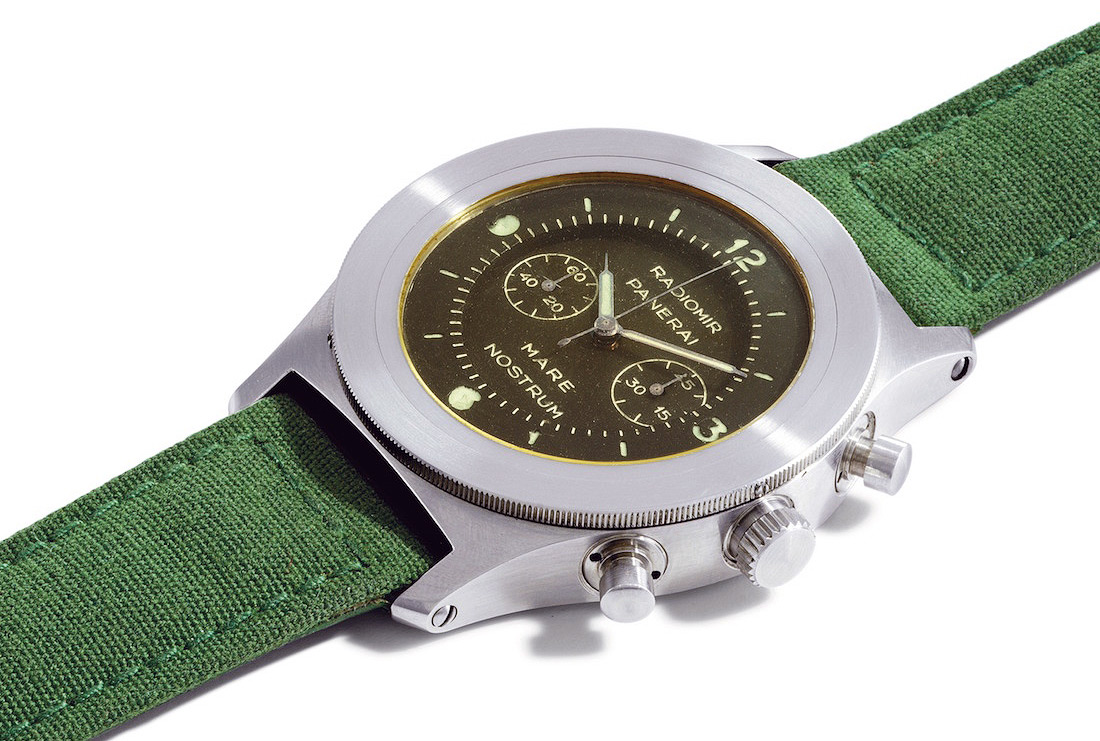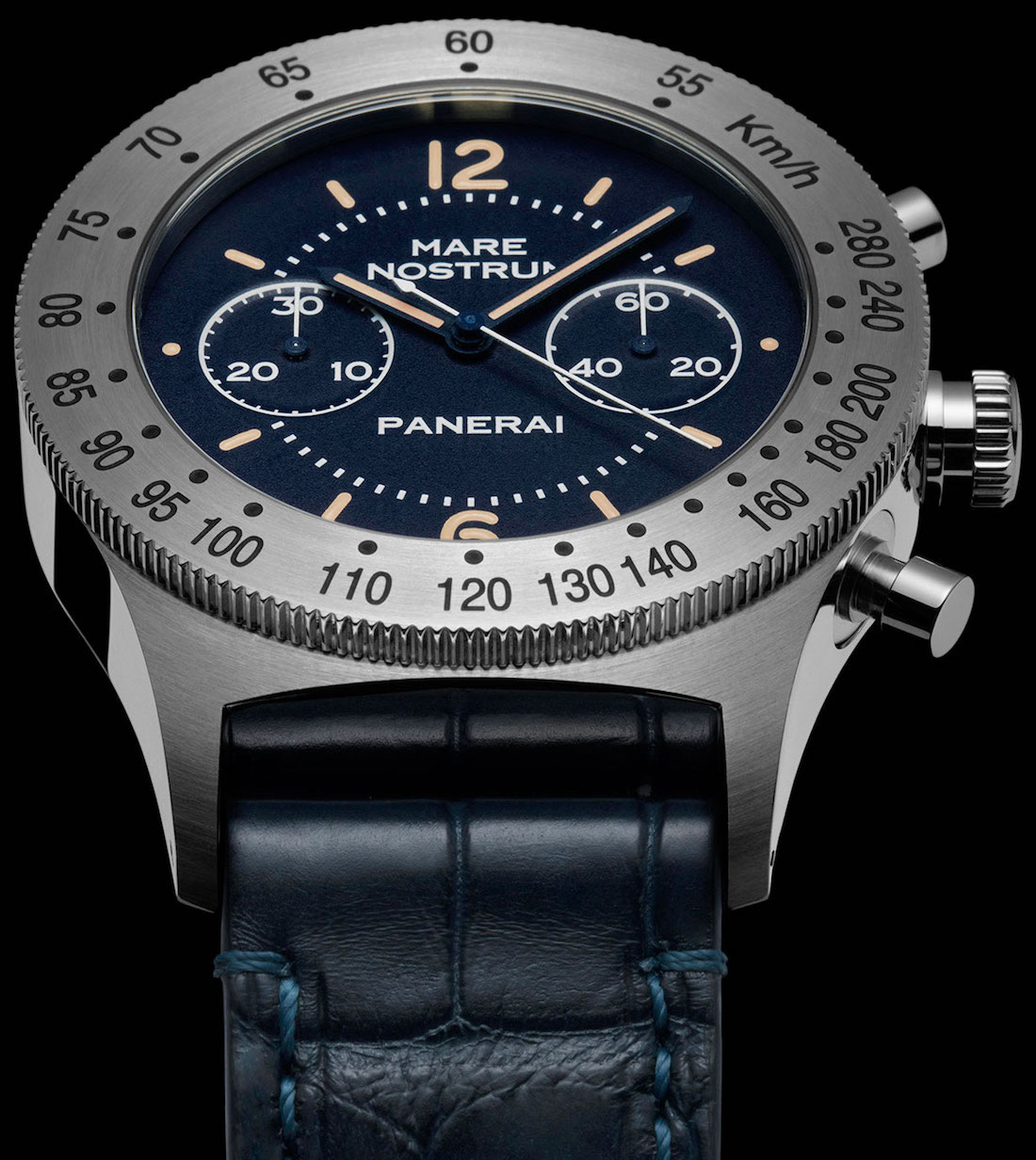
Panerai returns once more to what they call “Our Sea.” The Panerai Mare Nostrum Chronograph PAM716 (PAM00716) is a surprise, mid-2017 release from Officine Panerai that actually harkens back to not only its pre-Richemont days, but also to the brand’s first chronograph, produced during World War II…or some time after.
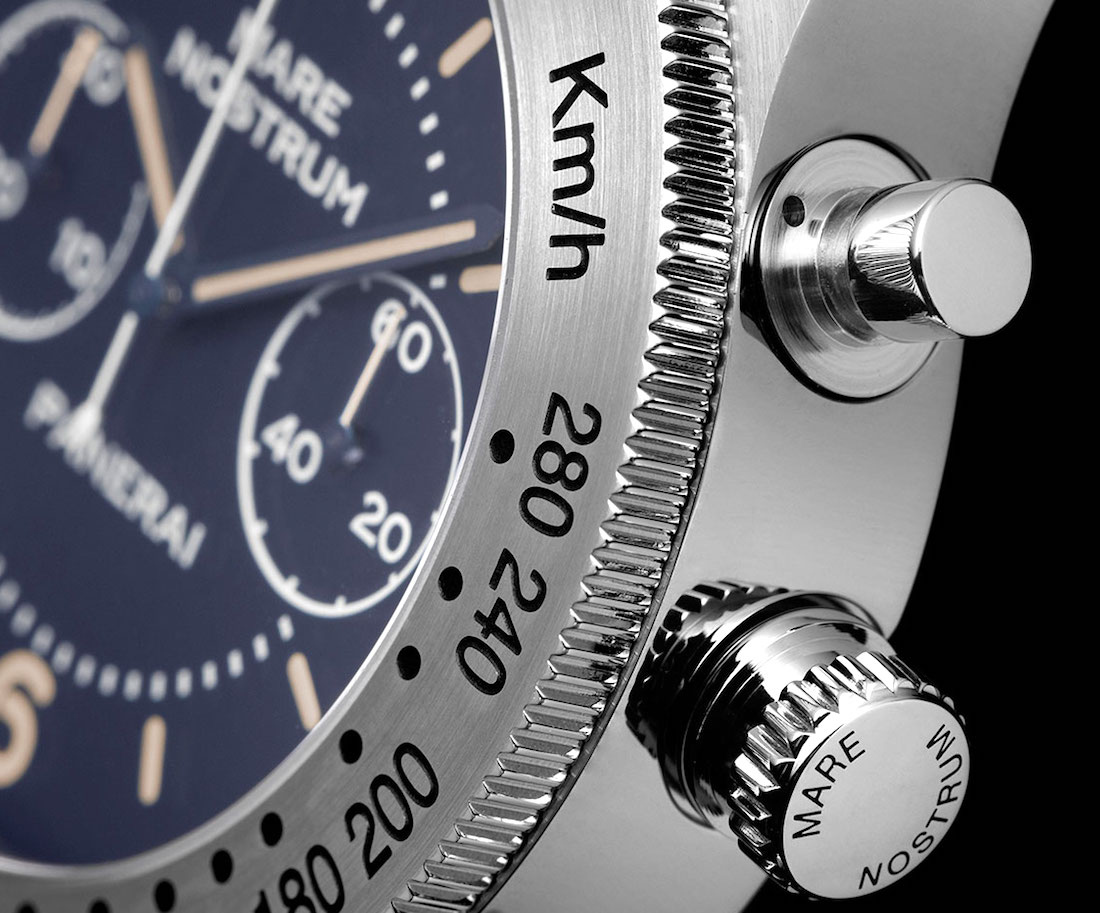
Historically, Mare Nostrum stood for “Our Sea” in Latin and it was the Roman’s name for the Mediterranean Sea. However, if you are more on-point with the history of Panerai than that of the world, you’ll know that Mare Nostrum was the name of the company’s first chronograph, reportedly designed for deck officers in the Italian Navy.
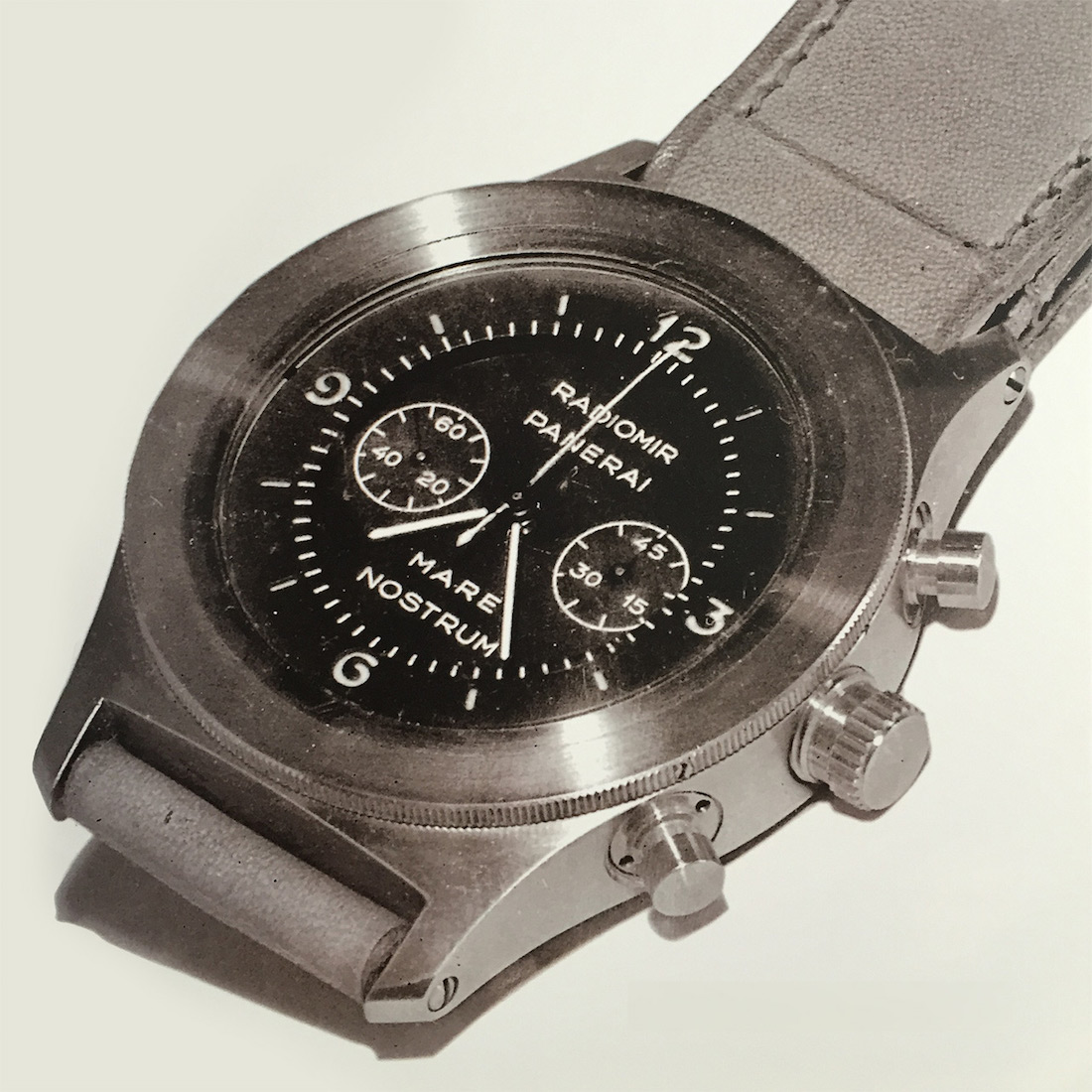
An original Mare Nostrum captured on a photographic plate from the 1950s. Photo: Panerai – Una storia Italiana, via: perezcope.com
As you would imagine, given the reputation of mid-20th century Panerai, and the appalling circumstances of World War II, the original Mare Nostrum prototype was a proper monstrum of a watch. For starters, it measured some 52mm wide, and was named Mare Nostrum after the phrase first used by the Romans – and, well, later first revived by Italian nationalists following the 1861 unification of Italy and then by the fascists of World War II. As such, the origins of the name “Mare Nostrum” can be traced back to the era of the expanding Roman Empire, but one really need not look back that far in time to have a clue as to why it was named as such in the Italy of the early 1940s.
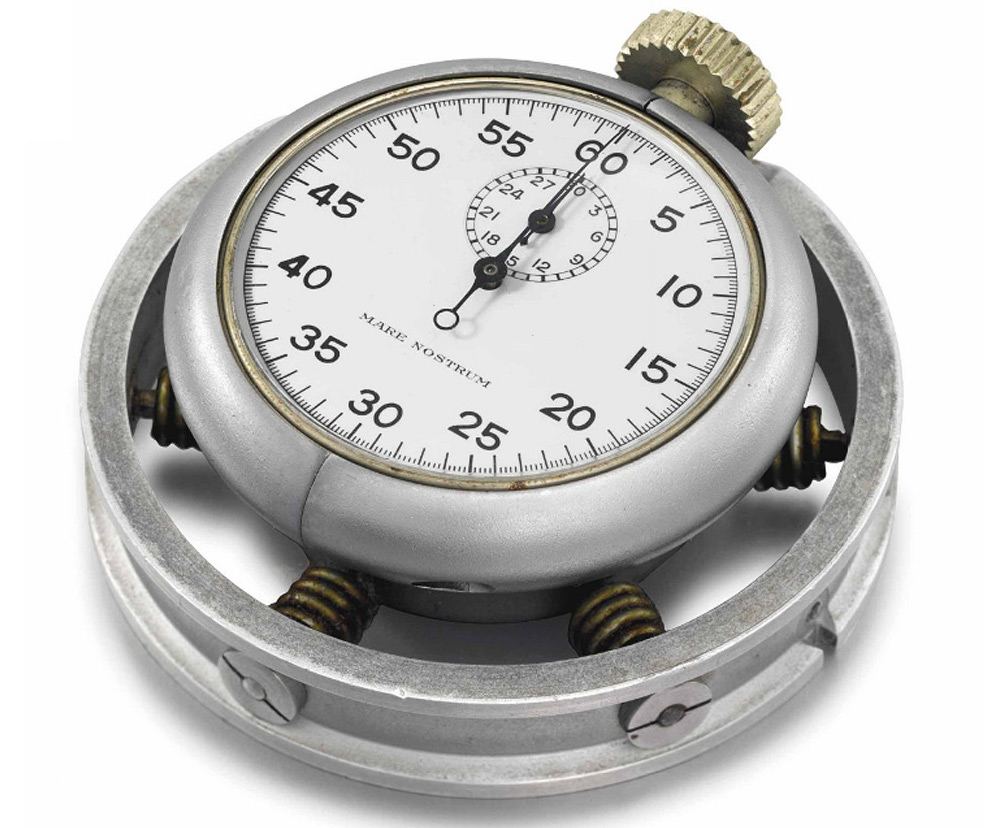
Mare Nostrum vintage chronograph equipped with a Minerva 19/14 caliber and some nifty anti-vibration springs. Photo: Christie’s, via: perezcope.com
Funnily enough, most sources say that the 1943 prototype of the Mare Nostrum never made it into production due to the turmoils of the war – sounds like a lazy explanation, since at what other time than during war would a watch designed specifically for the military be of any real use? Anyhow, Panerai also produced other devices under the name Mare Nostrum – so while they weren’t too keen on the watch, they were keen on the name, it seems. Other Panerai Mare Nostrum items included delay and timing devices for torpedoes and some other explosives used by the Italian army during WWII – just check out that impressive looking Mare Nostrum chronograph boasting a Minerva caliber and some nifty anti-vibration devices.
Add to all this research that Mr. Jose Pereztroika of perezcope.com has conducted – read that here – and you’ll learn that the Mare Nostrum’s case design actually is much closer to what Panerai had been doing in the mid-1950s, rather than in the early ’40s. Panerai has a fairly poorly documented history and the Mare Nostrum is a most fitting example – there is literally one actual detailed image from the ’50s, the one that you see further above, and that’s about it. Still, the Mare Nostrum has definitely existed and it is for everyone to decide how much weight they give to the fact of whether or not Italian navy commanders were rocking it during World War II.
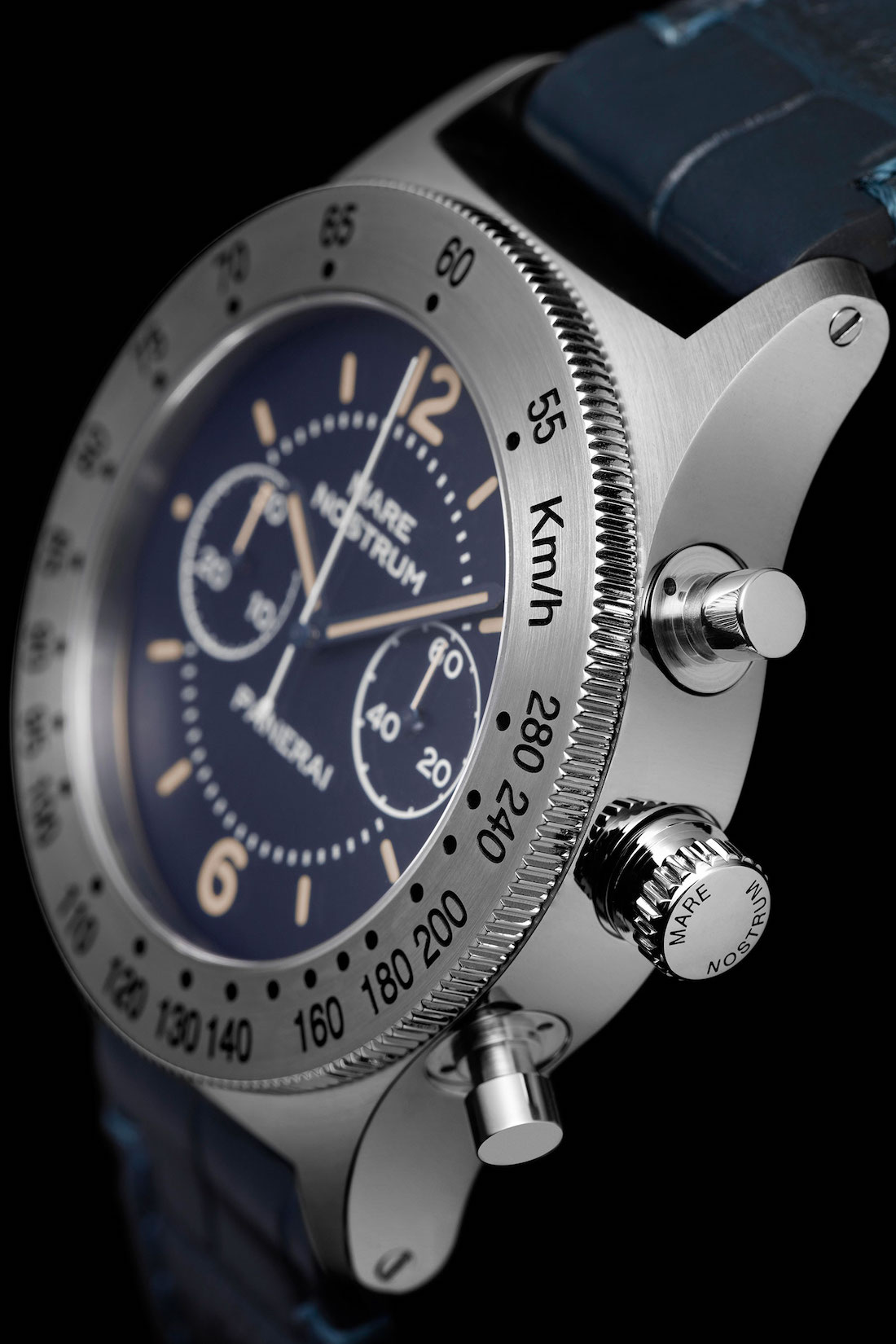
Worry not, though, if you thought this new release was going to be as massive as that from some 74 years ago, or its 52mm tribute-pieces from 2010 and 2015. The Panerai Mare Nostrum Chronograph PAM716 measures just 42mm wide. This is not a new-found thing either. There were some limited editions produced in Panerai’s pre-Vendome era. This, by the way, essentially means pre-Richemont (just the names have changed, but nothing else). On a side note, “pre-V” is probably used so much because Panerai, auctioneers and fans of the brand likely much prefer calling it the obscure “pre-Vendome” rather than “pre-Richemont” that mere mortal watch enthusiasts could understand.
Back on topic: back in the mid-90s, Panerai introduced the reference 5218-301/A, a 42mm-wide piece that is remarkably close in its appearance to this new Panerai Mare Nostrum PAM716. It was also followed by two Slytech pieces, in harmony with Panerai’s romance reaching its climax with actor Sylvester Stallone – who, in truth, has done a great deal by helping expose the then-largely-unknown brand, and who remains a fan of Panerai to this day.
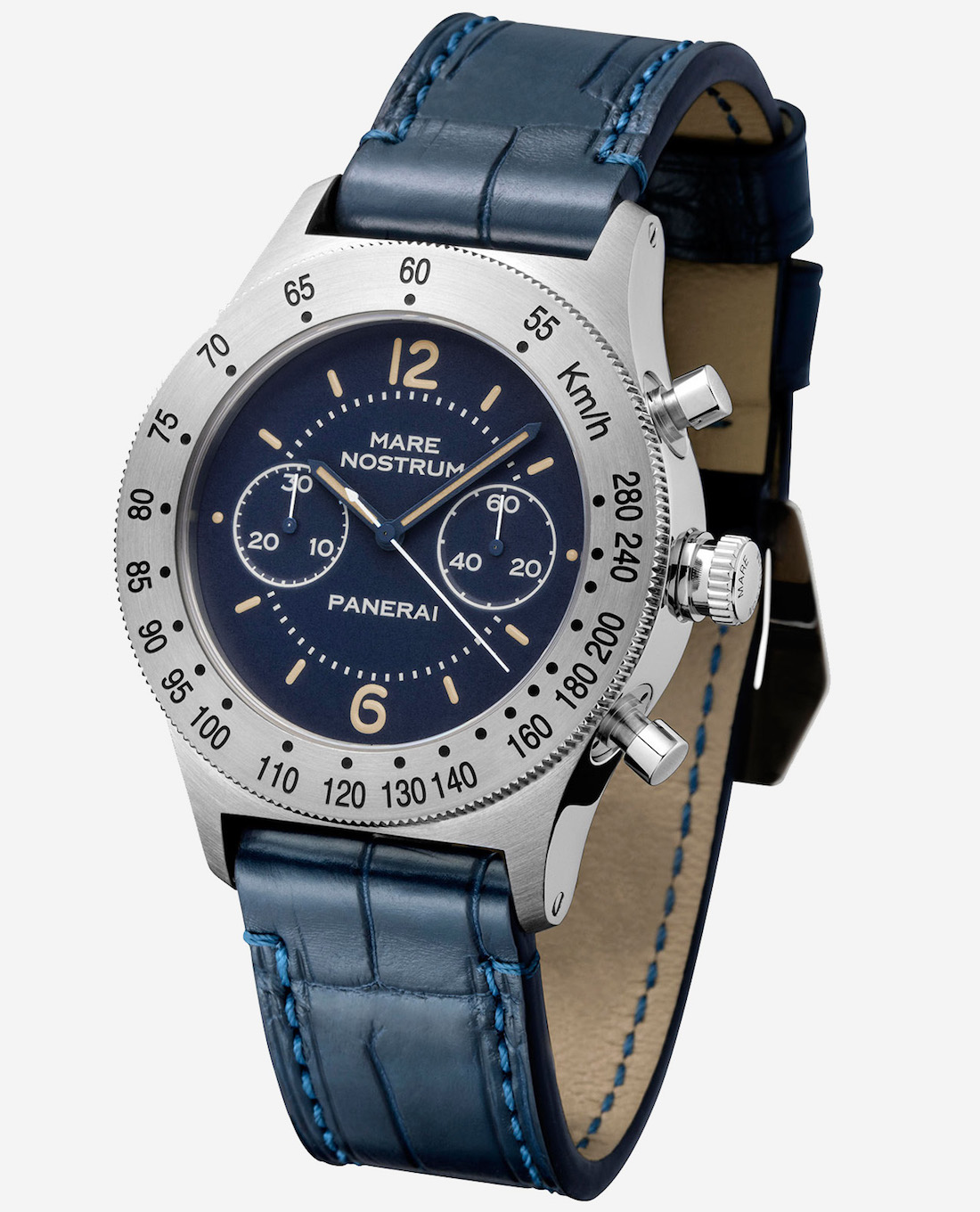
This neatly leads us to the new-ish Panerai Mare Nostrum Chronograph PAM716, which is equipped with a 42mm-wide, 50 meter water resistant case in stainless steel, a blue dial with tan colored luminescent indices and main hands, a km/h bezel, and a weird and unusual OP XXXIII movement which is actually an ETA 2801 with a Dubois-Depraz module for the chronograph. It has an expectedly measly 42-hour power reserve – no fancy Panerai in-house movement here, arguably because it would not have made much sense for Panerai to expensively develop an in-house chronograph movement that fits into a 42mm case.
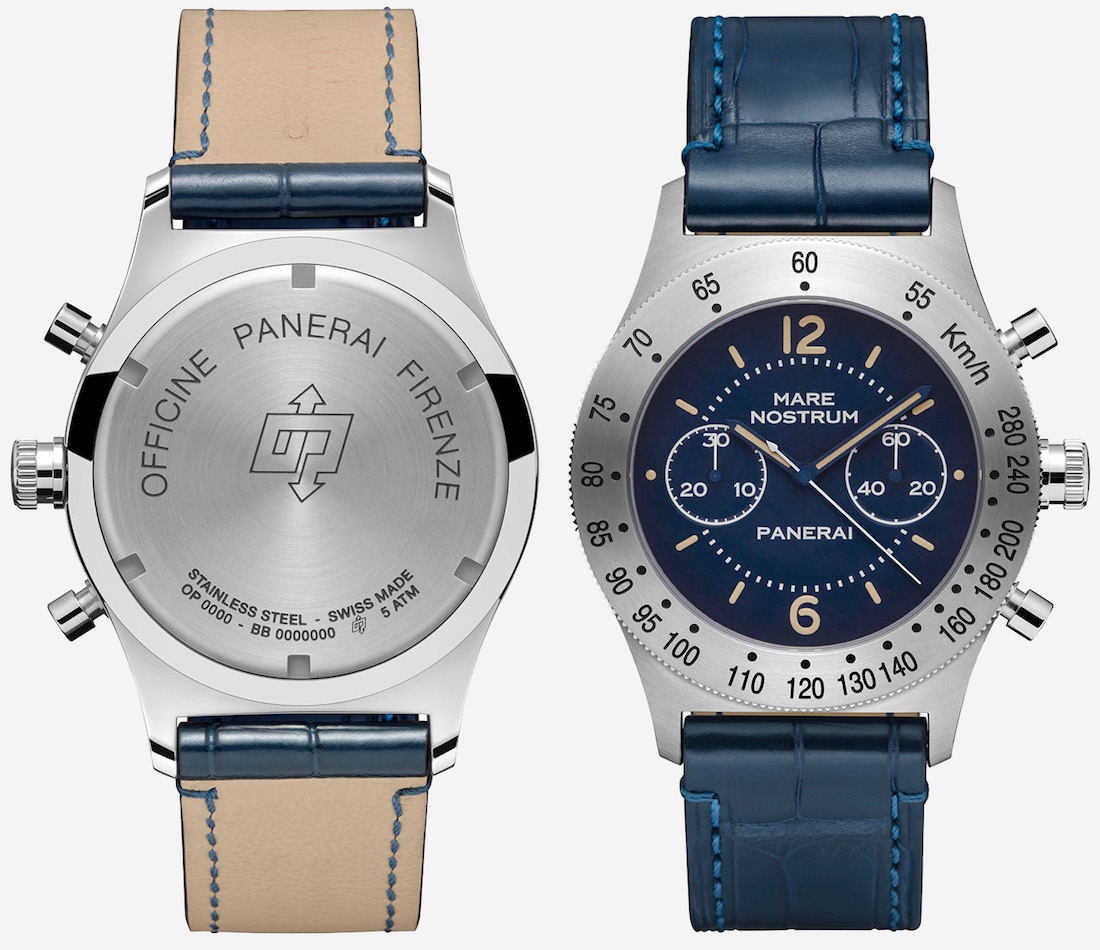
The km/h bezel is, to put it kindly, a mysterious addition on a watch supposedly designed for ship commanders. Add to this the fact that this being a regular tachymeter scale, any other unit of speed would work just the same. Take this as a hint on how many people actually use the tachymeter scales on their luxury watches.
On a positive note, the Mare Nostrum Chronograph is one exceedingly unusual Panerai. The traditional, piston-style chronograph pushers, the tachymeter bezel, the small case size, the nicely curved, long lugs, and the blue-tan color combination individually would make any Panerai the odd one out. This could fire back though – the Mare Nostrum has a patchy history, with hardly any documentation or actual pieces remaining from whichever era it actually belongs – and this will raise a few flags for the cautious, super-nerdy collector who this is pretty much exclusively aimed for.
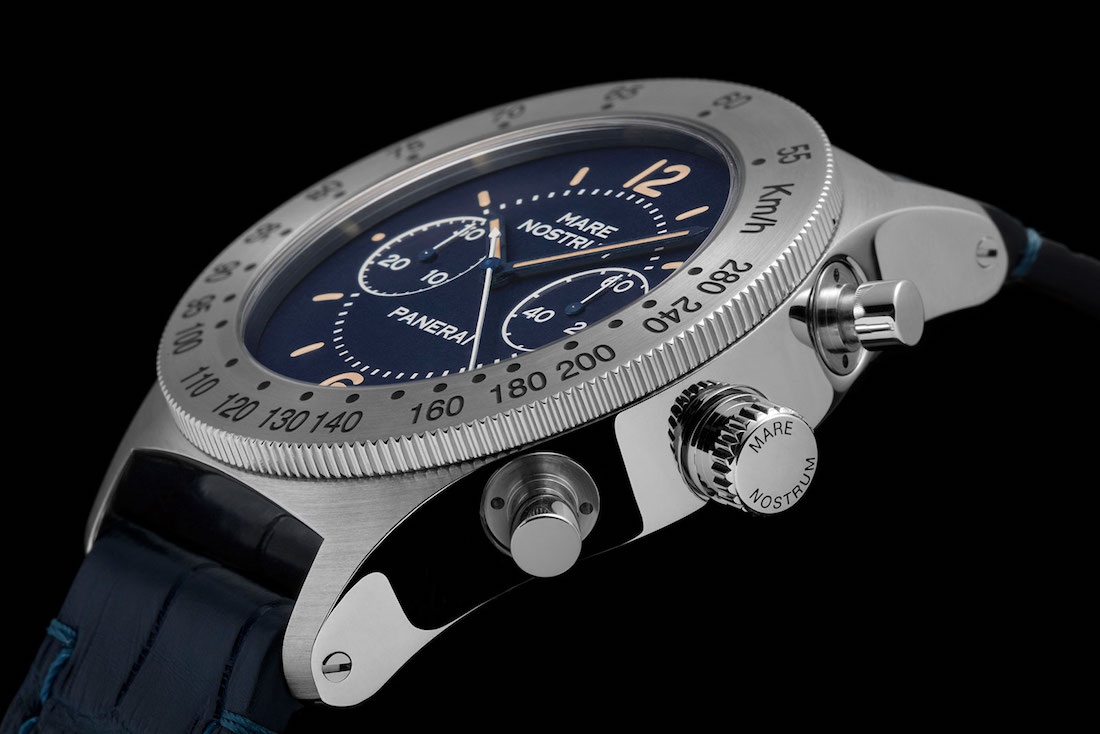
All this noted, it is good to see Panerai do something out of the ordinary, leaving the Luminors and Radiomirs on the side for a moment and presenting a look so scarcely encountered from them – I wouldn’t be surprised (in fact I hope) that Panerai is actually testing the waters here, as I would love to see more unusual and refreshing designs.
Price for the Panerai Mare Nostrum Chronograph PAM716 (PAM00716) is €9,900 and it will be limited to 1,000 pieces. panerai.com

